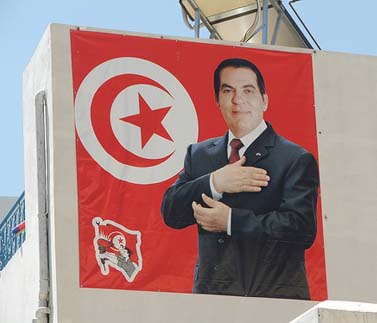
For those wondering how former President Ben Ali found a place of refuge, this Youtube video might help…

For those wondering how former President Ben Ali found a place of refuge, this Youtube video might help…
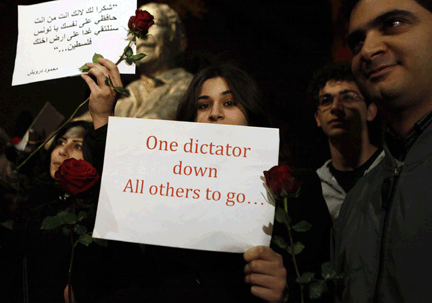
The recent revolution in Tunisia has exploded across the blogosphere, with pundits talking about a popular tsunami that may promote democracy out of the ashes of a lifelong dictatorship. In yesterday’s New York Times, Roger Cohen provided an optimistic view from his journalistic perch in Tunis: “These are heady days in the Arab world’s fragile democratic bridgehead.” Cohen, and others, are wondering aloud if Tunisia can become the new Turkey, a more or less secular democracy in which the “Islamists” are moderate members of a political mosaic. If so, then he warns that the “tired refrain of all the Arab despots that they are the only bulwark against the jihadists will be seen for the self-serving lie it has become.”
Perhaps, but one does not have to go far back into the regime of Saddam Hussein to realize that his Ba’athi party did not tolerate religiously motivated sectarian violence. Brutal as it was, his regime was a bulwark (if such a metaphor really makes sense politically) against the continual round in “liberated” Iraq of sunni killing shi’a and vice versa. But then Saddam was not brought down by a popular street uprising. Continue reading Tuning into Tunisia
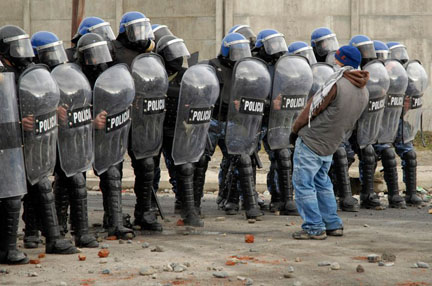
There are times when a picture needs no words. This photograph by Mohamed Kacimi provides such commentary on the current violence in Tunisia and all such dictatorial mentalities.
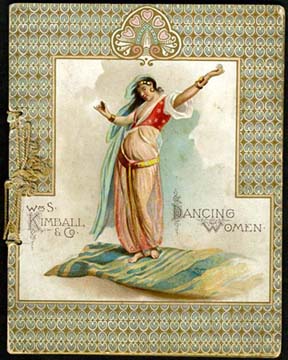
Kimball Tobacco Company Factory (1846-1905) in Rochester, New York, published a series of “Dancing Girls of the World.” These appear to be from the late 1880s. Several of these purport to depict women dancing in the Middle East. But it seems the artist had never actually seen ladies of the exotic harem. Take a peek for yourself.
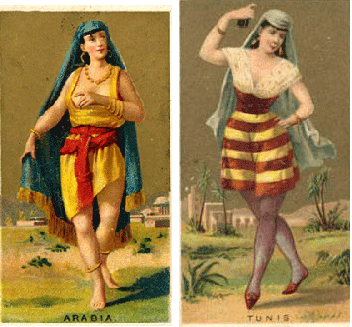
Continue reading Tobacco and Toe Stepping
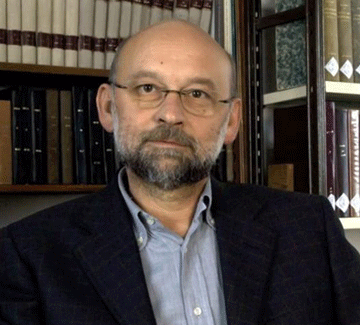
Yesterday afternoon, Tuesday the 5th January, about 14.30, there was an explosion in the library of the Institut des Belles Lettres Arabes (IBLA), Tunis. Following the blast, a fire broke out and in spite of the rapid intervention of the city’s Fire Brigade, our confrere Gian-Battista Maffi, 54 years, who was in the library, could not be rescued. He was burnt to death, his body charred.
Police from the forensic laboratory are at work to try to determine the causes of the explosion and the fire.
We join in the sorrow and grief of Gian-Battista’s mother, family and friends. Let us pray for our deceased confrere, for all his confreres in Tunisia and Italy, and for the members of the Pre-Capitular Assembly preparing to begin its work tomorrow the 7th January at Tunis.
José Cantal, Provincial of the Maghreb, is on the spot. He is in the process of organising the funeral at a date yet to be fixed.
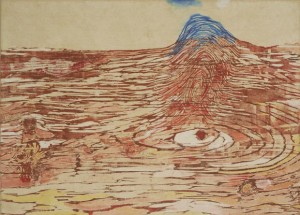
INTERFLOW
organized by
The Museum for African Art
Thursday Feb 19th, 2009
5-7pm on the 15th Floor of Ogilvy New York
Worldwide Plaza 309 West 49th St.
RSVP to ogilvyrsvp@gmail.com
Interflow presents recent painting and mixed media works on paper by New York-based artist Emna Zghal. Color and line continually search for boundaries they never find. Forms emerge to take on shapes that feel simultaneously familiar and foreign. Though the canvas fights to act as a boundary, poetic lines overflow into infinite space. Each mark acts in unison with the next to challenge the seemingly simple nature of line itself. Emna Zghal’s artwork elicits a never-ending network of nerves pulsing with colorful abstractions and an energy that suggests organic patterns in a continual search for form. Continue reading Interflow: The Art of Emna Zghal
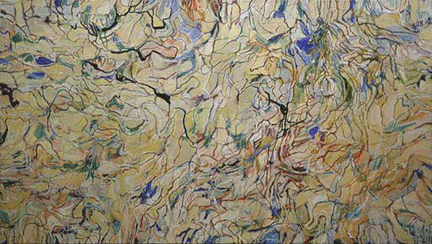
M.Y. ART PROSPECTS is pleased to present Against Reason, a solo exhibition by Emna Zghal.
December 11 – January 17, 2009 | Opening Reception December 11, 6-8PM
Against Reason features Zghal’s latest oil paintings with a smaller selection of prints and watercolors. Drawn from lyrical forms found in nature, she uses a wide spectrum of tones and minute strokes to create highly conceptual, abstract pieces. Turning away from contemporary conventions, she rigorously pursues her idiosyncratic themes of abandonment, lostness, and bewilderment.
Zghal is moved by the brilliant colors of a garden, the subdued beauty of a forest, the reflections within moving water. Her work brings to mind the abstractions of Lee Krasner and Joan Mitchell, particularly in her use of repetitive, swirling strokes with careful but unstrained release of color. Continue reading Art Against Reason
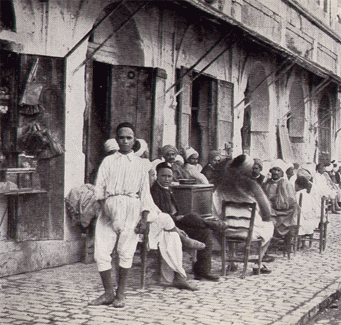
The Café in the Place Halfaouine.
In an earlier post I provided the Orientalist musings of Ms. Norma Octavia Lorimer, whose By the Waters of Carthage (1925) is classic put-down travel mongrelism. If you thought the first part was bad, read on below…
“OH, MY DEAR!
Come and take me to the desert; it lies over there, in the great Beyond, like Death — waiting — waiting — waiting.
I have seen camels in their proper atmosphere, lading their common everyday life of indifference, though so far, I must admit, I have not seen them trying to get through the eye of a needle. These strange supercilious leavings of the prehistoric past are almost as scornful of mankind as new-born babies. A Horse looks as foolishly modern besides a camel as an Englishman in his blue serge suit looks beside a burnoused and biblical Moslem…
I have been in the souks (bazaars), and it is true that there above all places you can hear the East ‘a-calling’; it is there that you forget that Tunis is under French protection and it has fine boulevards and theatres and a Petit Lourve, for all that is on the other side of the horseshoe gate (the porte de France, as it is called), and my hotel is within in. It is in the bazaars before midday that you get a glimpse of how the people live, for the pulse of the city is there, if an Arab city has a pulse. Continue reading Norma’s Take on Carthage: Part Two